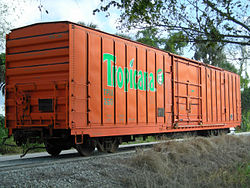This article includes a list of general references, but it lacks sufficient corresponding inline citations .(February 2016) |
| Part of a series on |
| Rail transport |
|---|
 |
| Infrastructure |
| Rolling stock |
| Urban rail transit |
| Other topics |
| |
This article contains a list of terms, jargon, and slang used to varying degrees by railfans and railroad employees in the United States and Canada. Although not exhaustive, many of the entries in this list appear from time to time in specialist, rail-related publications. Inclusion of a term in this list does not necessarily imply its universal adoption by all railfans and railroad employees, and there may be significant regional variation in usage.






































